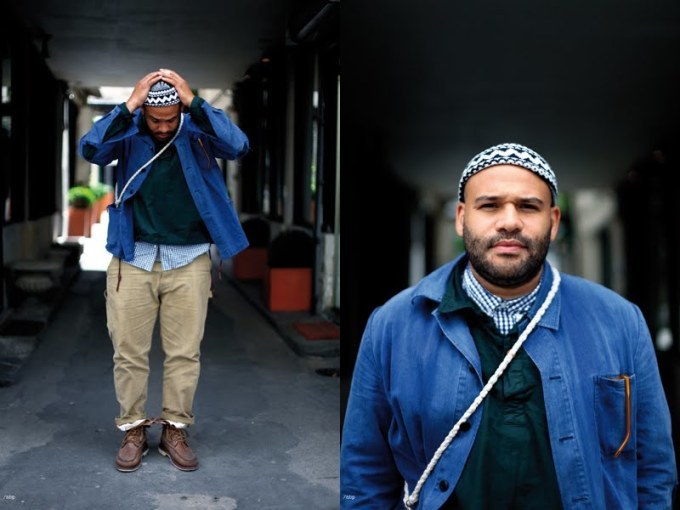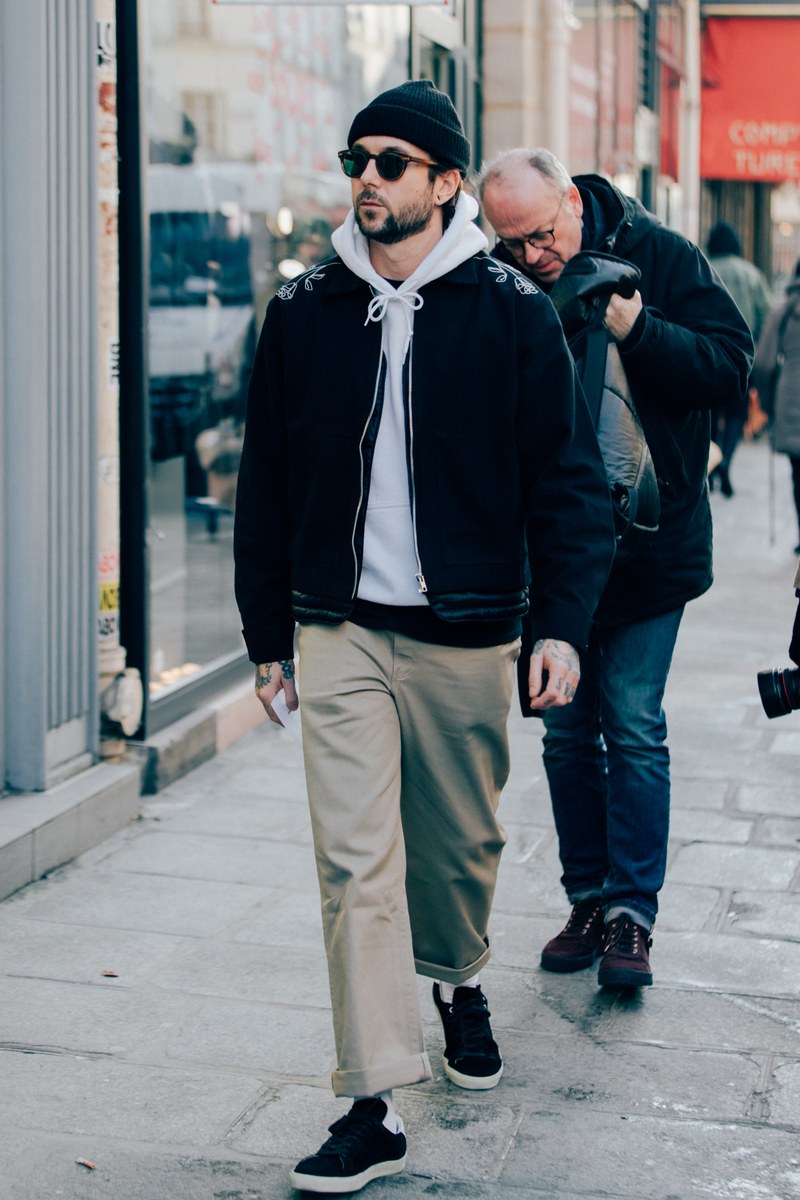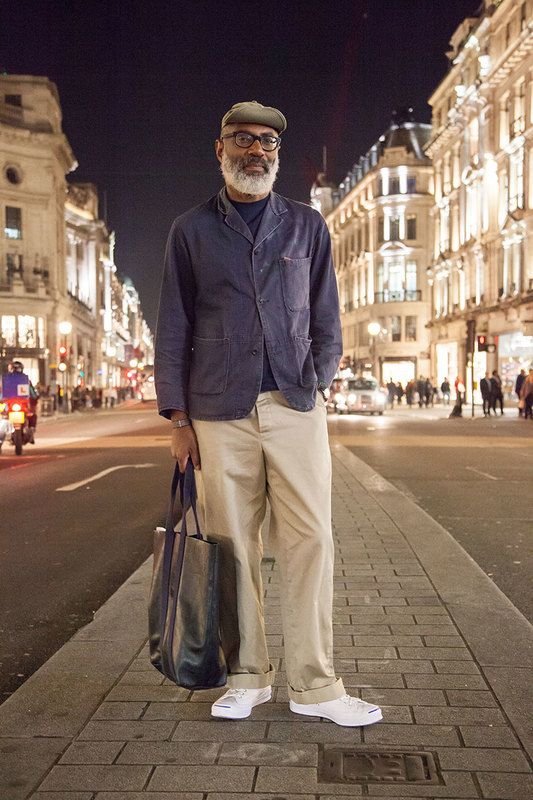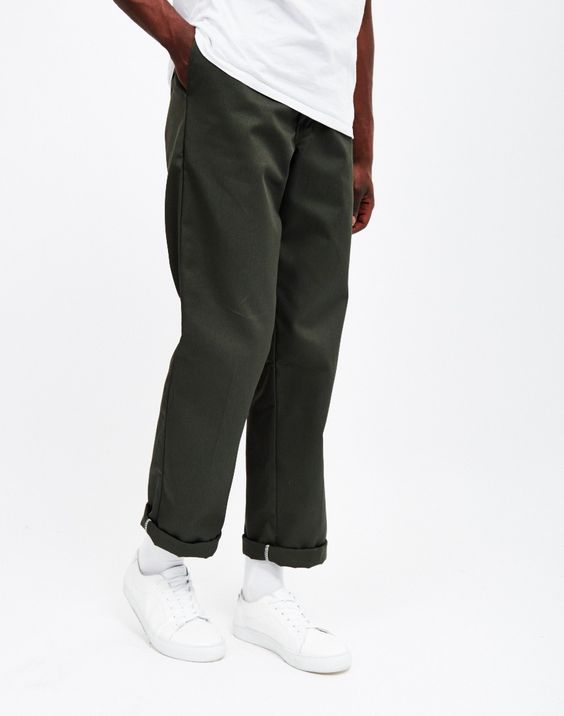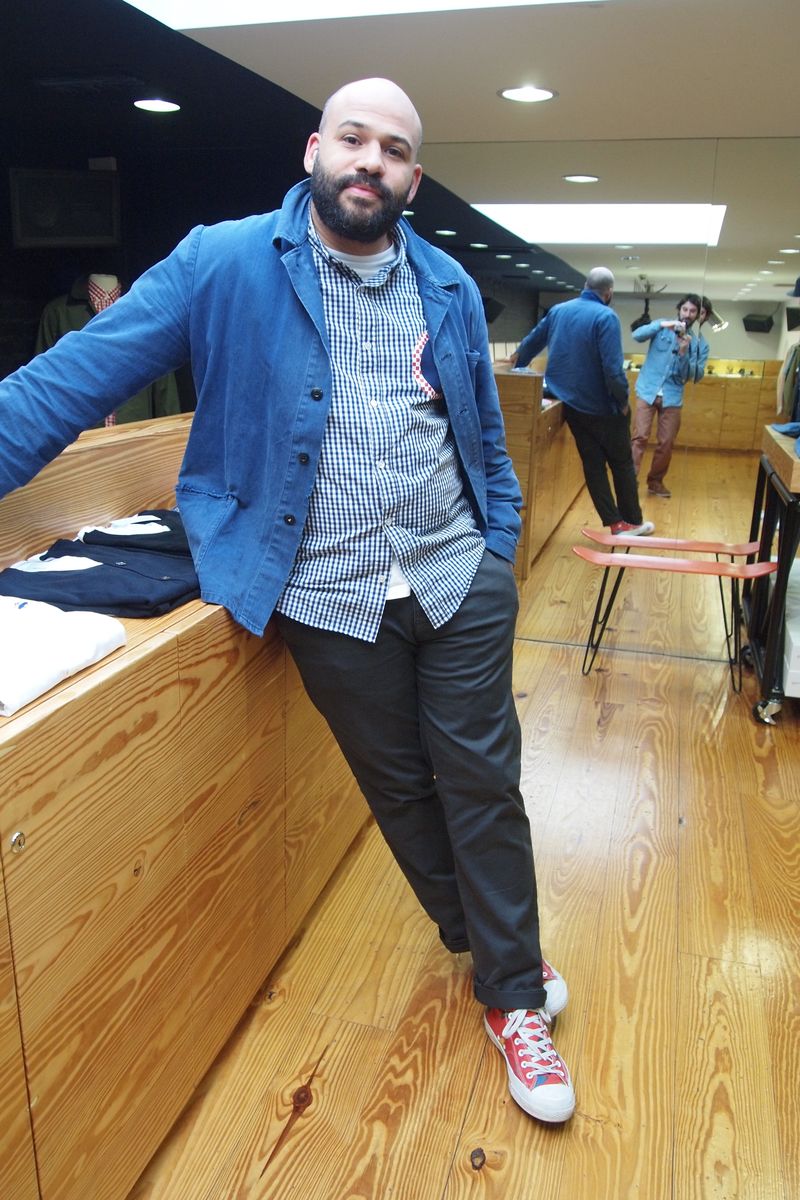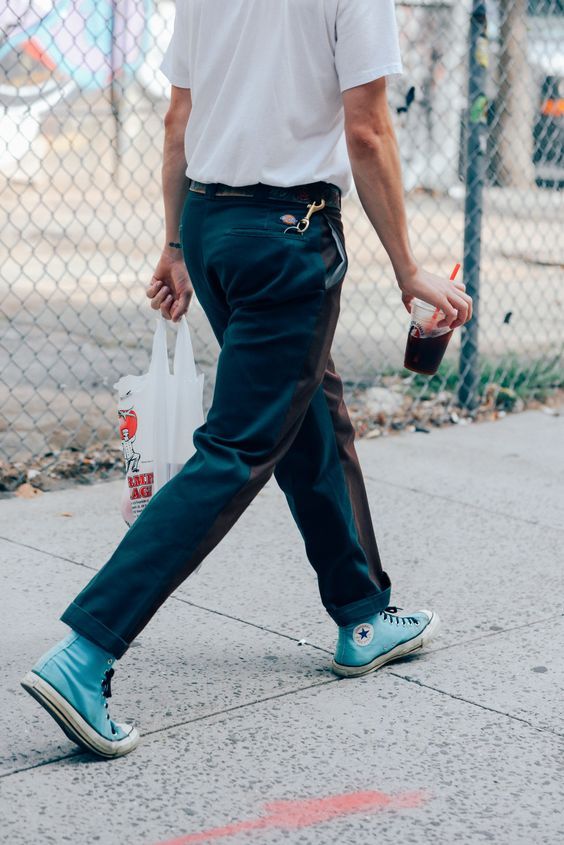
A significant influence on my personal style was a joke-y name tag sticker from an early 2000s magazine whose title I can’t even remember. Back then I was living in London and embarrassingly enthusiastic about everything English, as study-abroad students tend to be about their temporary homes.
A magazine I bought came with name-tag style stickers, including one for “Bad Dresser,” which I promptly slapped on my guitar case (yes I brought a guitar to London, we’ve established I was insufferable; anyway, here’s Wonderwall). The tags listed defining characteristics–for Bad Dresser they included “synthetic fabrics” and “gaudy logos.” Even today, I favor natural fabrics and remain somewhat allergic to logos.
That sticker’s advice was sound, but I’m here to endorse an exception: Dickies work pants, which are mostly polyester and have a logo above the pocket. Plus, they’re as American as Doc Martens are English (also in that they’re allegedly workwear and their country-of-origin varies). Now, we mostly recommend saving up to buy quality, classic clothing that flatters your body type. Dickies are cheap as hell and look it, and they do not give a damn what you’re shaped like. But that doesn’t mean they don’t have an inherent cool factor or can’t look good in the right context.
Why Buy Dickies?
First of all, Dickies are cheap. You can buy a pair for what you might pay in sales tax on a nice pair of flannels. Amazon has the 874 work pant for $19.97, with free shipping if you have Prime. It’s not often we recommend buying your clothes on Amazon. And the double knee work pant is only a little bit more.
So are they good? Depends on your definition of “good.” Dickies 874s, which have been around for over 50 years in roughly the same configuration, have a loose-ish cut, a rise on the high side of mid, and some idiosyncratic features–notably “tunnel” belt loops (they’re thick) and a slide waist closure (vs a button). As the pendulum swings from low rises and calf-hugging cuts to wider legs, Dickies represent a decent toe in the water of loose fits for guys who are skeptical.
The fabric and finishing on Dickies are… not terrific. Most Dickies come in a 65/35 poly/cotton twill, and they’re stiff and creased when new–slightly comparable to old Levis Sta-Prest fabrics. The look of a new pair of Dickies is quite particular–as they’re worn, washed, and dried they soften up a decent amount and the crease loosens up. On some fabrics (darker colors) the fabric will always be a little lighter where it was creased.
The fabric is wrinkle and stain resistant, to an extent. I’d compare it to the type of vintage 80/20 cotton/poly bend oxfords from the ’80s and ’90s you see a lot in thrift shops. Wrinkle resistant, not wrinkle free, and not particularly breathable. Although Dickies can be altered, seam allowances are tiny, so letting them out isn’t usually an option. Stitching in general is not super-refined, although I can’t say I’ve seen a lot of true manufacturing errors in the Dickies I’ve bought.
Why Are Dickies Cool, Again?
So Dickies don’t meet the high standards we’d set for a pair of dress pants. But that’s not the point–they are pretty cool. Like a lot of workwear, Dickies get their cultural meanings from people who choose to wear them out of their initial, intended context. Whether it’s skaters, rappers, or West Coast, Chicano style, people take Dickies and make them their own.
Dickies has enough presence in the skate community to sponsor skaters as sort of brand ambassadors. Skateboarders like clothing that is durable and loose enough to move in, and cheapness helps; most young skaters are not spending hundreds of dollars on pants that may tear when they inevitably fall. Skate adjacent dude Johnny Knoxville has been wearing Dickies, flannels, and Chucks almost exclusively for 20 years–it still works. Rappers have been wearing Dickies since at least the days of NWA. Crisp Dickies double knees (with the pocket and tag on the leg), Chucks, and a plain white t-shirt are largely the uniform–matching with a work shirt in the same fabric optional.
How to Wear Them
But how should you wear Dickies? You’re better off looking to people like Union’s Chris Gibbs or writer/consultant/filmmaker Jason Jules as fit models. I think they look best cut at the ankle or slightly cropped–they tend not to break well if left longer. A classic skate move is to just razor off any unwanted length, but a clean hem or even a cuff is a better option for most–the cuff adds a little weight, which can help them hang better. In khaki, Air Force blue, “lincoln green,” or brown, they are a nice alternative to fatigue type pants. They look great with simple vulcanized sneakers such as Vans Old Skools or Chuck Taylors.
For the 874s, I’d advise sizing up. Quality control is not the best at Dickies, so sizing can vary a little, but in my experience they run tight in the waist, and you don’t want them tight–it’s not flattering and Dickies fabric and slide closure don’t provide a lot of give. Rather, get them slightly large than slightly small.
Dickies also offers a slim-straight model (sometimes through skate shops). Same fabric, button closure, tapered fit. I reviewed a pair of these in my khaki roundup awhile back.
You can also explore some of Dickies’ special collections and collaborations. Their 1922 line, started in 2010, focuses on made-in-USA, vintage-inspired pieces in better fabrics than the standard offerings. They also make capsule collections such as this recent one with Opening Ceremony. Dickies has also made (or at least slapped a label on) clothes for Junya Watanabe, Stussy, and others who want to borrow a little subcultural cred.
While I think those have their appeal, they sort of miss the point of Dickies for me–they’re anti-fashion, and in effect disposable. Buy a pair, experiment with altering them as you see fit, and don’t worry about them too much.
